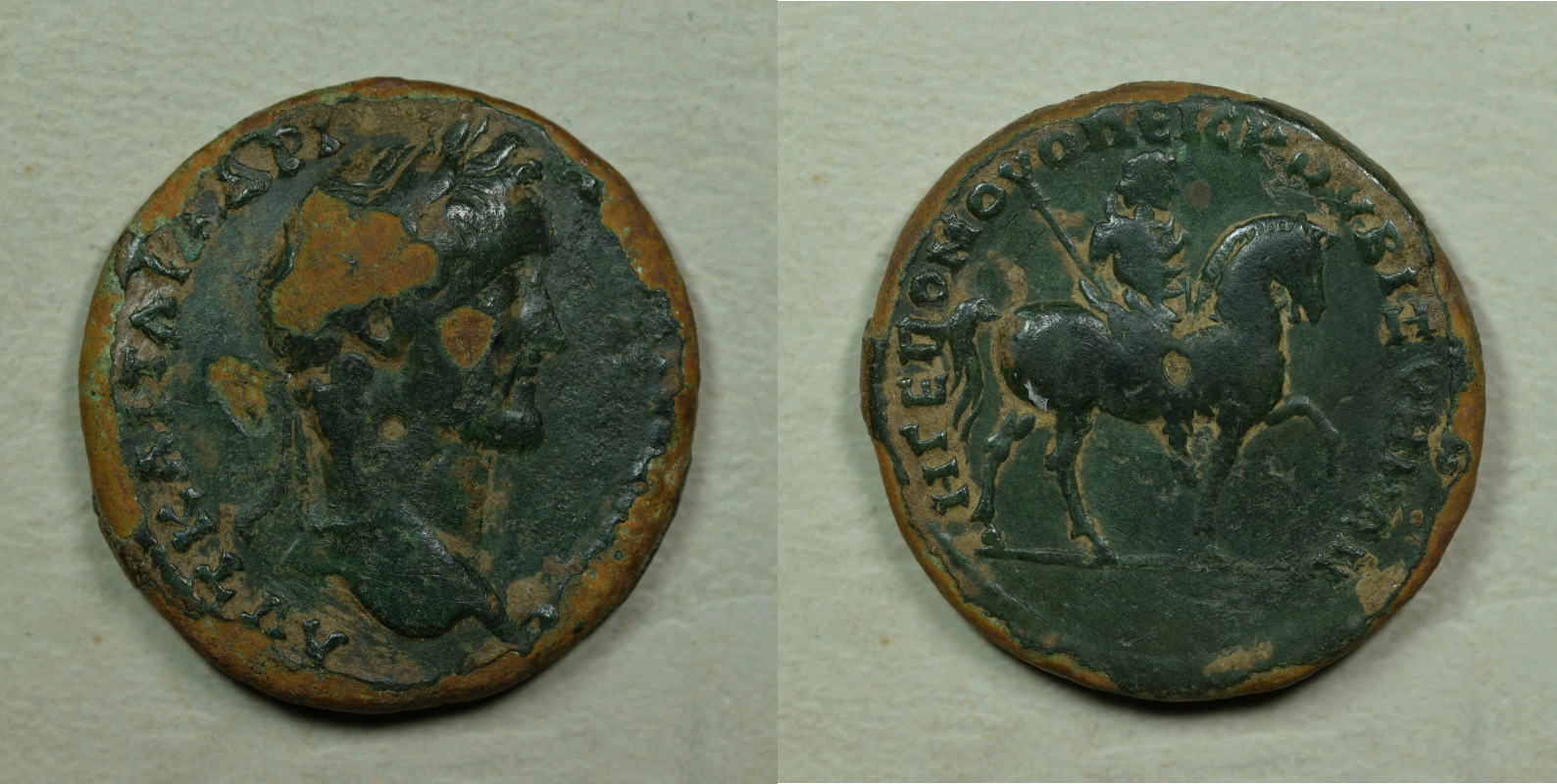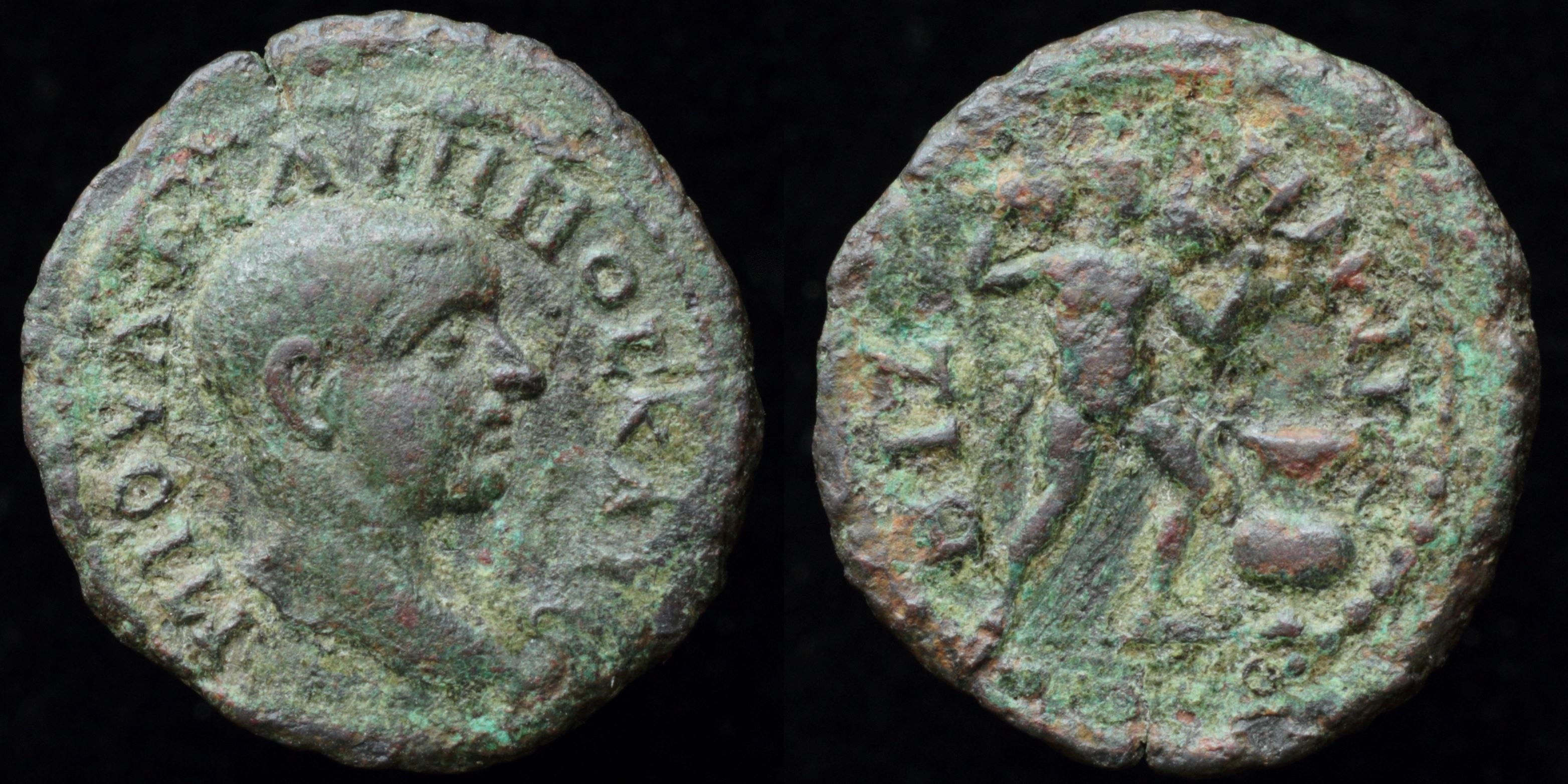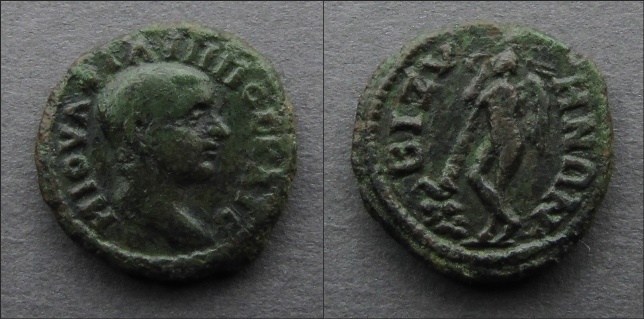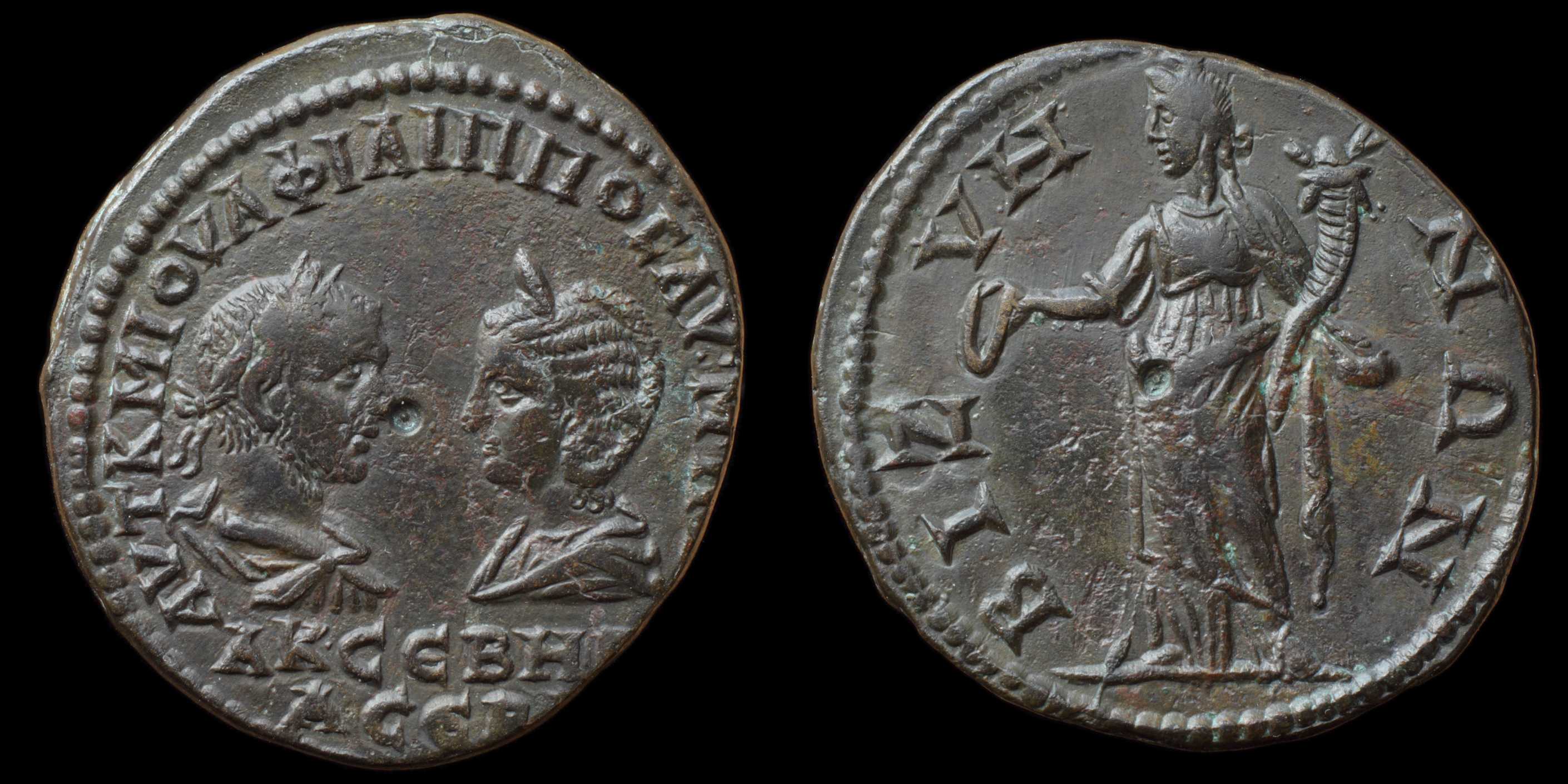Bizya or Bizye was a settlement in Thrace. It served as the capital of the Thracian Kingdom.
It struck coins from about the time of Hadrian and until the time of Philip II.
It struck coins from about the time of Hadrian and until the time of Philip II.
Modern location: Vize, Turkey
(1)
Antoninus Pius

Obverse: ΑVΤ ΚΑΙ Τ ΑΙ ΑΔΡΙ ΑИΤΩИΕΙИΟϹ, Laureate head of Antoninus Pius, right
Reverse: ΗΓΕ ΠΟΜ ΟVΟΠΕΙϹΚΟV ΒΙΖVΗΝΩΝ, Pius on horseback, cradling scepter in arm; trotting to right
Diameter:
29 mm
Die Orientation: 6 H
Weight: 15.25 g
Die Orientation: 6 H
Weight: 15.25 g
No notes for this coin
Unpublished; cf. RPC Online IV.1 2969 temp (Plotinopolis and obv. insc. differs a little)
(2)
Philip II Junior

Obverse: bare head right; M IOVΛ ΦIΛIΠΠOC KAIC
Reverse: Silenos walking right naked with tail, pours wine from wineskin on his shoulders into large krater; BIZV_H (NWN)
Diameter:
18.5 mm
Die Orientation: -
Weight: 3.52 g
Die Orientation: -
Weight: 3.52 g
No notes for this coin
Youroukova 157; Voegtli -; Mionnet suppl. II, pg. 238, 195
(3)
Philip II Junior

Obverse: M IOVΛ ΦIΛIΠΠOC KAICAP, bare-headed bust of Philip II.
Reverse: BIZVHNΩN, Thanatos (god of death) or weary Eros extinguishing torch.
Diameter:
17.74 mm
Die Orientation: 7 H
Weight: 3.32 g
Die Orientation: 7 H
Weight: 3.32 g
Rare.
Philip II (238–249) was the son and heir of the Roman Emperor Philip the Arab by his wife Marcia Otacilia Severa. When his father became emperor in 244, the younger Philip was appointed Caesar. In 247 he became consul, and was later elevated by his father to the rank of Augustus and co-ruler. Philip I 'The Arab' was killed in battle by his successor Trajan Decius in 249. When news of this death reached Rome, Philip II was murdered by the Praetorian Guard. He died in his mother's arms, aged twelve years. Worth noting that, only according to numismatic evidence, he had a sister called Julia Severa or Severina, whom the extant literary sources do not mention, and a brother, Quintus Philippus Severus.
Thanatos, in ancient Greek religion and mythology, the personification of death. Thanatos was the son of Nyx, the goddess of night, and the brother of Hypnos, the god of sleep. He appeared to humans to carry them off to the underworld when the time allotted to them by the Fates had expired. His touch was gentle, likened to that of his twin brother Hypnos (Sleep). Violent death was the domain of Thanatos' blood-craving sisters, the Keres, spirits of slaughter and disease.
Thanatos was once defeated by the warrior Heracles, who wrestled him to save the life of Alcestis, the wife of Admetus, and he was tricked by Sisyphus, the king of Corinth, who wanted a second chance at life.
Thanatos plays a prominent role in two myths. Once when he was sent to fetch Alkestis (Alcestis) to the underworld, he was driven off by Herakles in a fight. Another time he was captured by the criminal Sisyphos (Sisyphus) who trapped him in a sack so as to avoid death.
In Greek vase painting Thanatos was depicted as a winged, bearded older man, or more rarely as a beardless youth. He often appears in a scene from the Iliad, opposite his brother Hypnos (Sleep) carrying off the body of Sarpedon. In Roman sculptural reliefs he was portrayed as a youth holding a down-turned torch and wreath or butterfly which symbolised the soul of the dead.
BMC 15, Moushmov 3519.

Obverse: laureate, draped and cuirassed bust of Philip I right from behind confronting diademed and draped bust of Otacilia Severa left; AVT K M IOVΛ ΦIΛIΠΠOC A(VΓ) M ΩT / A K CEBHP / A CEBA
Reverse: Homonoia facing, head left, wearing kalathos, holding patera and cornucopia; BIZ_VH_NΩN
Diameter:
28.5 mm
Die Orientation: -
Weight: 11.4 g
Die Orientation: -
Weight: 11.4 g
No notes for this coin
Varbanov 1584
